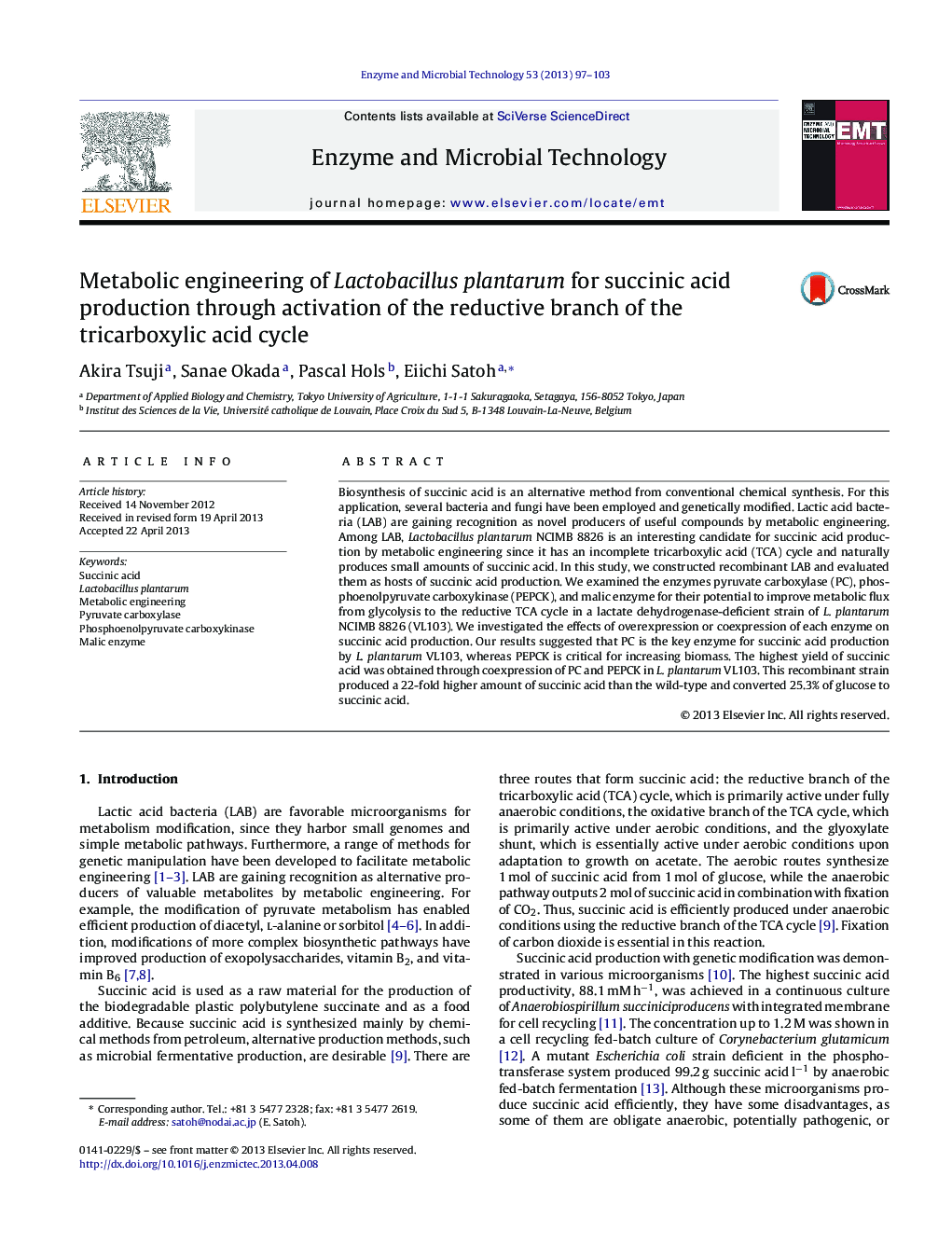| کد مقاله | کد نشریه | سال انتشار | مقاله انگلیسی | نسخه تمام متن |
|---|---|---|---|---|
| 17036 | 42635 | 2013 | 7 صفحه PDF | دانلود رایگان |

• Lactobacillus plantarum was used as a model as for succinic acid production.
• We examined carbon fixation enzymes that improve metabolic flux.
• We compared strains overexpressing or coexpressing carbon fixation enzymes.
• One of the recombinant L. plantarum converts 25.3% of glucose to succinic acid.
• The efficiency of succinic acid production is the highest reported in Lactobacilli.
Biosynthesis of succinic acid is an alternative method from conventional chemical synthesis. For this application, several bacteria and fungi have been employed and genetically modified. Lactic acid bacteria (LAB) are gaining recognition as novel producers of useful compounds by metabolic engineering. Among LAB, Lactobacillus plantarum NCIMB 8826 is an interesting candidate for succinic acid production by metabolic engineering since it has an incomplete tricarboxylic acid (TCA) cycle and naturally produces small amounts of succinic acid. In this study, we constructed recombinant LAB and evaluated them as hosts of succinic acid production. We examined the enzymes pyruvate carboxylase (PC), phosphoenolpyruvate carboxykinase (PEPCK), and malic enzyme for their potential to improve metabolic flux from glycolysis to the reductive TCA cycle in a lactate dehydrogenase-deficient strain of L. plantarum NCIMB 8826 (VL103). We investigated the effects of overexpression or coexpression of each enzyme on succinic acid production. Our results suggested that PC is the key enzyme for succinic acid production by L. plantarum VL103, whereas PEPCK is critical for increasing biomass. The highest yield of succinic acid was obtained through coexpression of PC and PEPCK in L. plantarum VL103. This recombinant strain produced a 22-fold higher amount of succinic acid than the wild-type and converted 25.3% of glucose to succinic acid.
Journal: Enzyme and Microbial Technology - Volume 53, Issue 2, 10 July 2013, Pages 97–103